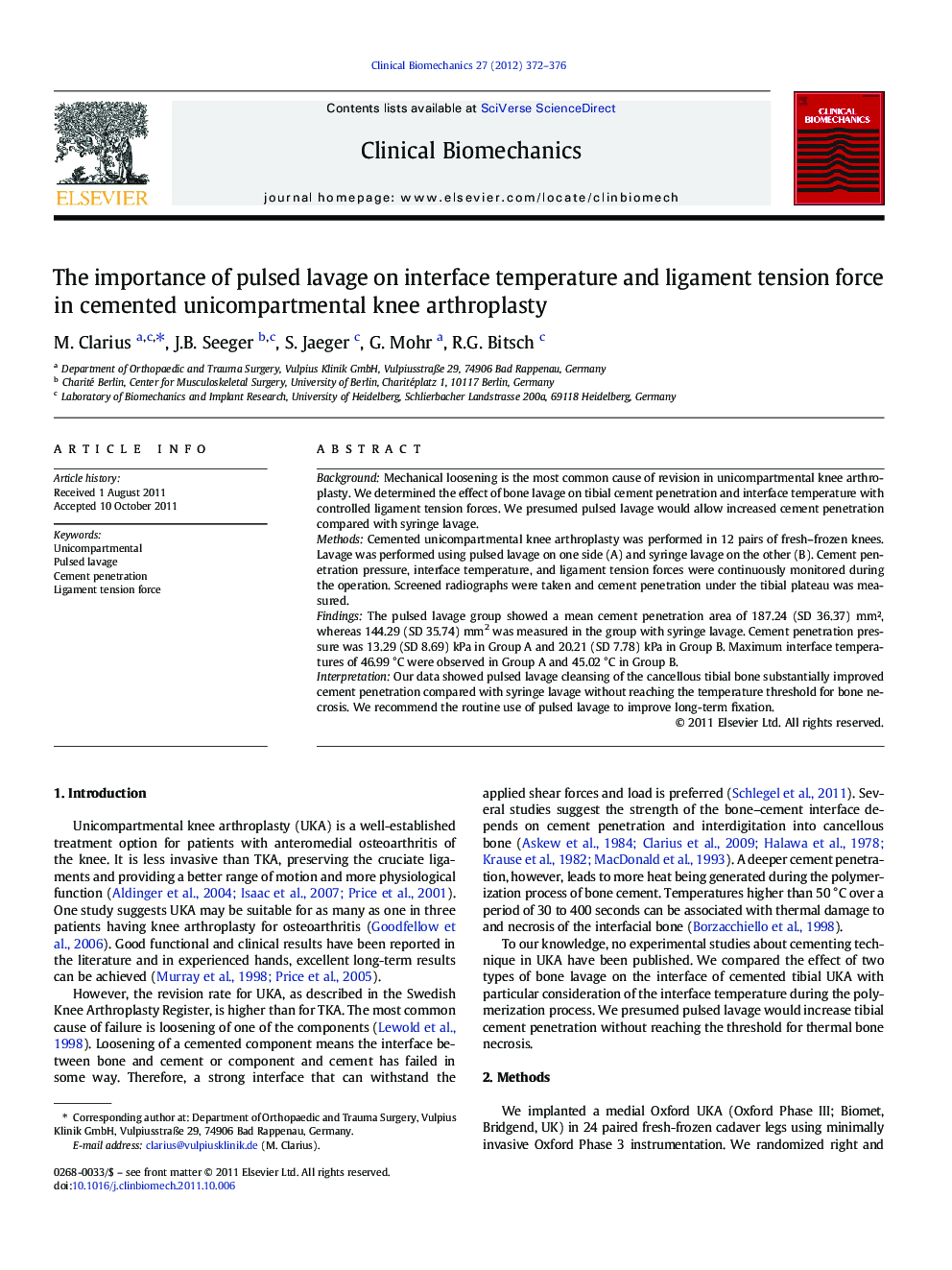| Article ID | Journal | Published Year | Pages | File Type |
|---|---|---|---|---|
| 6205133 | Clinical Biomechanics | 2012 | 5 Pages |
BackgroundMechanical loosening is the most common cause of revision in unicompartmental knee arthroplasty. We determined the effect of bone lavage on tibial cement penetration and interface temperature with controlled ligament tension forces. We presumed pulsed lavage would allow increased cement penetration compared with syringe lavage.MethodsCemented unicompartmental knee arthroplasty was performed in 12 pairs of fresh-frozen knees. Lavage was performed using pulsed lavage on one side (A) and syringe lavage on the other (B). Cement penetration pressure, interface temperature, and ligament tension forces were continuously monitored during the operation. Screened radiographs were taken and cement penetration under the tibial plateau was measured.FindingsThe pulsed lavage group showed a mean cement penetration area of 187.24 (SD 36.37) mm², whereas 144.29 (SD 35.74) mm2 was measured in the group with syringe lavage. Cement penetration pressure was 13.29 (SD 8.69) kPa in Group A and 20.21 (SD 7.78) kPa in Group B. Maximum interface temperatures of 46.99 °C were observed in Group A and 45.02 °C in Group B.InterpretationOur data showed pulsed lavage cleansing of the cancellous tibial bone substantially improved cement penetration compared with syringe lavage without reaching the temperature threshold for bone necrosis. We recommend the routine use of pulsed lavage to improve long-term fixation.
